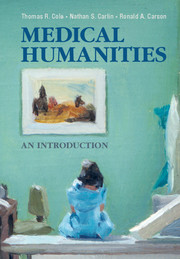Book contents
1 - The Doctor-Patient Relationship
from Part I - History and Medicine
Summary
One of the essential qualities of the clinician is interest in humanity, for the secret of care of the patient is in caring for the patient.
Francis Weld PeabodyAbstract
This chapter explores the history of the doctor-patient relationship in the West. Beginning with a discussion of how this relationship was conceived in antiquity, it examines how the Hippocratic ideal became associated with the Christian duty to care for the sick and needy; how the beliefs of antiquity were questioned by Renaissance physicians who wanted to “see for themselves”; how professional ethics based on virtue arose in the eighteenth century in response to increased competition between practitioners; and how the modern ideal of the doctor-patient relationship based on a personal connection, careful physical examination, and trust arose in the late nineteenth century. Then, with a focus on recent cultural and structural challenges to this modern model, it considers how we might reconstruct the doctor-patient relationship to address recent challenges, such as patients’ skepticism about doctors’ genuine concern for them as people and doctors’ concern with patients’ lack of compliance and growing challenges to their authority.
- Type
- Chapter
- Information
- Medical Humanities , pp. 26 - 39Publisher: Cambridge University PressPrint publication year: 2014



